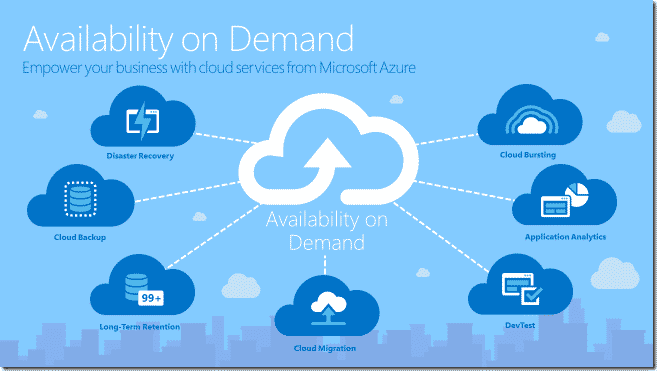In our technology-driven business world, digital transformation has become essential for success. No matter an organization’s size, location, or industry, if they want to resonate with modern consumers and develop a competitive advantage, they need to go digital.
In fact, it’s estimated that 40% of all technology spending will go toward digital transformations, with enterprises spending over $2 trillion on these initiatives throughout 2019. If you’re aren’t currently working towards your digital transformation, you could already be falling behind your competitors.
So, what is digital transformation? How can you develop an effective digital transformation strategy? What success stories can you learn from to improve your own initiatives? Keep reading for the answers to these questions and more!
What is Digital Transformation?
While you’ve probably heard this buzzword thrown around before, it has become so broad and widely used that many aren’t sure what it actually means. So, you may find yourself asking: “What is digital transformation? Why does it matter, and what does it really mean for my business?”
The digital transformation definition is: “The integration of digital technology into all areas of a business resulting in fundamental changes to how businesses operate and how they deliver value to customers.”
However, it’s also important to note here that this isn’t just an operational change. A true digital transformation is also a cultural change that requires cross-departmental collaboration and experimentation—and a willingness to adopt new technologies and practices that are far different from the traditional, long-standing business processes that many companies were built upon.
In a digitally-driven, highly competitive business market, falling behind on technology and digital trends can quickly mean business failure. So, a successful digital transformation is vital for all modern businesses, from startups to enterprise level.
How to Structure a Digital Transformation Process
The digital transformation process for each company will look totally different based on their specific industry, challenges, and budget. However, there are a few constants and common themes that can be used to develop a general framework for your digital transformation process.
The following framework created by Cognizant can be used to develop a digital vision for your organization—simply tailor the specifics to your unique needs! It breaks the digital transformation framework into four major buckets:
1. Customer Experience
Improving the customer experience has become a crucial goal for organizations looking to resonate with modern consumers and drive long-term brand loyalty. In fact, 86% of buyers are now willing to pay more for a great customer experience, and 73% point to customer experience as an important factor in buying decisions—which makes enhancing the user experience a crucial part of digital transformation. So, be sure to consider how customer insights acquired through digital tools technology can also be used to elevate your marketing, sales, and customer service efforts.
For example, will you use a Customer Relationship Management (CRM) platform to identify which items a customer has historically purchased so your sales team can recommend complementary products? Will you participate in social listening to determine the hidden pain points for consumers in each of your target audiences–and then use innovative digital marketing tools (such as targeted paid advertisements) to tailor the promotions that pop up on their feeds to match? Figuring out how you will digitize your customer experience to make it more engaging, seamless, and personalized will go a long way in attracting new customers, satisfying current ones, and building long-term brand loyalty.
2. Products and Services
In such a saturated business landscape where multiple companies offer very similar things, organizations are realizing it is now nearly impossible to differentiate based on products and services alone. So, instead of simply selling a one-off product, they need to sell the complete experience around purchasing and using that product.
For example, running shoes are a common good produced by hundreds of thousands of companies worldwide. The experience of buying running shoes isn’t particularly special, personalized, or memorable—you either walk into a store or go online, pick the pair you want, and purchase them. However, sneaker giant Nike differentiated its products by creating the Nike by You platform, which allows users to digitally customize a completely unique pair of shoes with the colors, materials, and design of their choosing. This effectively makes selecting and ordering sneakers online creative, engaging, and individualized—giving them a competitive advantage over other producers who haven’t yet taken this process digital.
As organizations implement more sophisticated ways to understand their customers (like through a CRM or social media as we previously mentioned), those customers will expect product and service offerings that are tailored to meet their individual needs. Going digital can help you keep up by providing the data insights you need for thoughtful, well-informed personalization. Then, unique tools and technologies can be leveraged to actually carry out changes and updates to your product and services offerings.
3. Operations
Advanced digital technology and tools can be used to improve both you day-to-day operations and big picture business processes in several ways. For example, big data analytics can be used to streamline shipments and deliveries by tracking product movements, the cloud can be used to foster cross-team collaboration by storing important data that can be easily accessed by multiple departments, and mobile platforms and business apps can enable employees to work remotely from any device.
By automating processes, streamlining repetitive tasks, and leveraging innovative digital tools to improve daily operations, you organization can become more nimble. This allows you to more quickly adapt to changes in consumer demands, digital trends, and industry best practices. Digitizing daily operations also makes it easier to increase and sustain profitability by cutting manual labor costs for repetitive, tedious processes. This agility and cost-savings can help you develop and maintain a competitive advantage in an ever-changing market.
4. Organization
In order for your digital transformation to be truly successful, your employees will need to learn to work together in a new way. You digital transformation can’t be done in a vacuum or only apply to one area of the business—breaking down silos and fostering collaboration across teams and departments will be essential. So, it’s important that you’re properly educating your staff about what digital transformation is and why it’s important, clearly outlining what your digital transformation strategy entails and each person’s unique role in carrying it out, and putting policies in place to keep everyone on track.
Beyond just logistically digitizing your organization, giving remote employees the business collaboration tools they need to access and share documents on-the-go, it’s also important to “digitize” your company culture. This means adopting a digital mindset where innovation and new ideas are rewarded, and trial and error is not seen as a failure. Create a culture where your employees feel comfortable sharing and discussing both their wins and mistakes so that everyone else on the team can learn from them.
How to Build a Digital Transformation Strategy
Now that you have a better idea of what a general digital transformation framework should include, here are a few tips for building a strategy to effectively carry it out based on the needs of your unique organization.
1. Assess Where You Currently Stand
Before you can conduct a successful digital transformation, you need to have an understanding of where your journey is beginning. To truly identify the gaps that need to be filled and areas where improvements can be made, you have to be critical and honest with yourself. Examine your current digital infrastructure and take an inventory of the tools and technologies you’re using now, then analyze how well they’re helping you address your current and future needs.
This evaluation will help you determine tools needs to be updated, processes that could be optimized or automated, and which departments should implement changes first. For example, if you find your sales department is the most bogged down by inefficient processes, but is responsible for driving the most revenue, you can allocate your efforts accordingly—and investment digital transformation in the most strategic way.
2. Analyze the Surrounding Market
Once you conduct an internal audit, you should look externally to analyze market dynamics and what other competitors in your industry are doing. This can be done by gathering market research, holding focus groups, sending out surveys, and scanning social media. As more and more industries are beginning to overlap, you can even look for success stories outside of your specific industry for inspiration, ideas, and insights.
Since new technologies are being developed at a rapid pace and digital norms, standards, and best practices are constantly evolving, this step is essential. If a cutting-edge organization is always adopting the latest tech gadget or implementing a new form of automation, learn from their wins and failures! This can help you avoid costly mistakes, more quickly identify opportunities where others have found success, and create a more relevant and up-to-date digital transformation strategy.
3. Set Objectives—and How You’ll Track Progress
Now that you’ve looked both internally and externally to determine where you stand and where you aspire to go, it’s time to set some concrete goals and objectives. What do you want to achieve through your digital transformation? Are there certain departments or areas of your business that are a priority? Consider both your short and long-term goals, then outline clear objectives that are S.M.A.R.T.—specific, measurable, attainable, relevant, and timely.
Once you have set your digital transformation objectives, you need to determine how you’ll measure whether you’re on track to achieve them or falling behind. Select a few key performance indicators (KPIs) to attach to each goal, then be sure you’re monitoring progress, recording results, and sharing them with other key stakeholders in the organization. This way, if you’re not on track, you can identify the problem and course-correct as soon as possible.
4. Educate Your Employees and Outline Expectations
Before you actually implement operational changes or change your organizational infrastructure, you need to ensure everyone on your staff is on the same page. Have an open discussion about what your digital transformation goals are, why you’ve set them, and how you plan on achieving them. It’s important that you are as transparent as possible about what is coming and clearly outline your expectations for your staff. This way, no one is blindsided by changes that may affect their role or daily tasks and understands the future vision of the company.
Once your team is aware of what your digital transformation will mean for the company and their role in it, it’s time to help them prepare for it. You can rely on a variety of training methods to teach them new skills in an engaging way, such as having an expert come to the office and host a workshop, participate in webinars, or earning online certifications. Digital transformation is just that—a transformation. It will take your employees some time as well as trial and error to get used to organization changes, so do what you can ahead of time to set them up for success.
5. Implement Operational Changes, Constantly Measure Success, and Make Adjustments as Necessary
Now that the foundation has been set and everyone in your organization is on board, it’s time to actually put your strategy into action. But keep in mind this isn’t the last step in your digital transformation by any means! Make sure you’re regularly checking your progress by monitoring the KPIs you previously set, and discussing the results with other key decision makers in your organization. This way, everyone will have full visibility and can agree on any changes that need to be made so they can be implemented quickly.
Remember that when it comes to technology, tools, and trends, best practices are constantly evolving—which means a true digital transformation never ends. Instead, the way your business uses technology will evolve as your business grows and the market changes. Following these steps to lay the foundation and get informed now will help you to be more strategic and agile long-term!
Digital Transformation Examples
Now that you know what a solid digital transformation strategy entails, here are a few examples or organizations that have executed successfully.
1. BMO Harris Bank
Traditionally, bankers at BMO Harris Bank would spend up to an hour drafting loan applications while their customers waited. After realizing this didn’t deliver a seamless and engaging customer experience, they decided to accelerate this drawn out loan origination process with a software from startup Blend. With Blend, the application process could be completed in just moments. Plus, applications can be filled out on weekends or at night after work so customers aren’t confined to the bank’s working hours.
The result of this digital transformation? Online mortgage and home equity application volume at the bank rose 275% over the same period from the previous year, and more than 80% of all mortgage and home equity applications are now submitted using Blend. This digital change drives revenue, satisfies customers by providing convenience and accessibility, and empowers bankers to spend more time developing relationships with their clients rather than filling out and filing tedious paperwork.
 Source: BMO Harris Bank
Source: BMO Harris Bank
2. The Home Depot
While you may think of The Home Depot as just your typical hardware store, in reality, they’re leveraging robust data and a skilled IT department to fuel its ongoing digital transformation. In late 2017, the company announced that it would invest more than $11 billion over the next three years to create an improved, cohesive physical and online shopping experience for its customers, plus hire 1,000 IT and user experience professionals. They also created a program where contractors and DIYers could shop online and conveniently pick up their order in the store, rather than having to take the time to walk up and down store aisles to find what they’re looking for.
Home Depot also improved the way it uses data to better understand customers. By tracking local trends, they are able to ensure that the right items are in stock during the appropriate seasons without losing money on excess inventory. They also added visual and voice search to their app so that instead of being overwhelmed by product options, customers can search for a specific item and quickly be matched with what they’re looking for. Their app also provides educational resources that add value to the shopping process by giving guidance on how to make home repairs or complete a DIY project. This investment in creating a cohesive, engaging shopping experience is certainly paying off—Home Depot’s revenue has grown from $94.59 billion in 2017 to nearly $110 billion today.

Source: The Home Depot
3. Microsoft
Microsoft products such as Windows and Office suite are commonly used by both businesses and individual users alike. However, lagging stock prices and increased competition from companies such as Apple, Amazon, and Google led the company to invest in a digital transformation to create a more cloud-based business.
After CEO Satya Nadella took over in 2014, the company began a shift towards its cloud networking systems. They also moved away from the traditional annual Office 365 software in favor of a more fluid subscription model for both personal and enterprise use. This effectively changed the public’s perspective: while Microsoft was once seen as an outdated, stagnant, and stiff company, it was now being seen as an innovative and forward-thinking cloud solution. In early 2014, right before Microsoft’s digital transformation began, their annual revenue was $93.5 billion—in 2019 it has reached $122 billion. This year, Microsoft also became the third company to get a $1 trillion market cap—before its major competitor Google.

Source: Microsoft
Digital transformation may sound overwhelming—but it certainly isn’t impossible. At Protected Trust, our goal is to simplify technology while empowering people to communicate so they can achieve their greatest potential from anywhere on the planet.
We do this with a vision of a modern digital workplace, built on an ecosystem of Microsoft Teams and the Microsoft 365 platform.
Whether you’re looking to learn more about how technology can affect your workplace or are ready to start implementing Microsoft products and services today, reach out to a PT expert!
{{cta(‘f4950b3e-6346-46ce-ba5a-c1020d15f090′,’justifycenter’)}}









